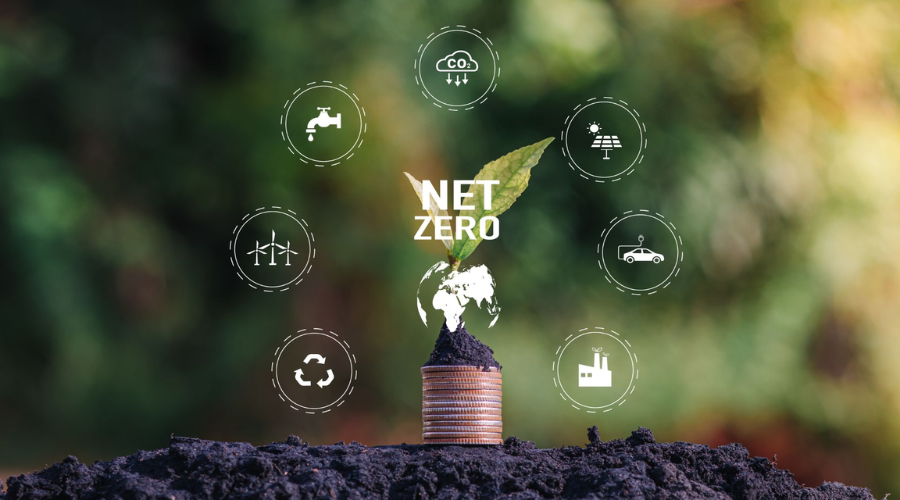If the last decade taught us anything, it’s that every zipper, seam, and shipping label tells a story. At OBF we decided the packaging itself should be as performance-driven as the leggings inside it. Last year we quietly rolled out new mailers, sleeves, and labels designed to cut carbon, protect oceans, and give forests a head start. This report is the first time we’re sharing the full scorecard—no glossy filters, no greenwashing. Just the numbers, the stumbles, and the next stretch goals

Forty-Two Tonnes of CO₂ Never Emitted
Switching from virgin-plastic mailers to ones made of 100 % post-consumer recycled LDPE sounds like a small tweak, but the math adds up fast. Each recycled mailer produces 68 % fewer greenhouse-gas emissions than its conventional twin. Multiply that by 1.2 million shipments and you arrive at 42.4 tonnes of CO₂-e avoided. To picture it: that’s the annual exhaust of nine gasoline cars left in park, or the energy used to power 18 average homes for an entire year. The recycled resin is sourced from curbside programs across South-East Asia—material that was already on its way to landfill or incineration. We also shaved 12 % off our outbound freight weight because the recycled material is slightly lighter, trimming fuel burn on trucks and cargo flights. None of this required customers to change behavior; the only difference they noticed was a small “42 t CO₂ saved” stamp on the back flap
1.8 Million Ocean-Bound Bottles Reborn
Before these bottles became mailers, they were the kind you see washed up on tropical coastlines. We partnered with coastal collection hubs in Indonesia and the Philippines that pay local fishing crews to intercept plastic within 50 km of shore. Once sorted, chipped, and pelletized, the PET is blended with a small amount of ocean-recovered HDPE for extra tear strength. Every mailer now carries a QR code; scan it and you’ll see a map tracing the exact beach clean-up your package helped fund. The program created 140 fair-wage jobs for waste pickers and funded two new sorting centers in Jakarta. We even kept the faint turquoise tint of the ocean plastic—no dye needed—so when customers open a box they can literally see where the material has been
A Sleeve That Grows Back
Inside each mailer, garments used to swim in a thin polybag. We replaced that bag with a sleeve spun from bagasse, the fibrous leftovers after sugar-cane juice is extracted. Because bagasse is an agricultural waste stream, nothing extra is planted for our packaging; the crop is already grown for the food industry. The sleeve feels like paper but stretches 15 %, so it hugs a single pair of leggings or a bundled outfit without ripping. Toss it in a home-compost pile and it breaks down in 45–90 days, leaving no micro-plastics—just organic matter that can enrich soil. In pilot tests gardeners used the compost to grow tomatoes; the plants showed no difference in yield compared to control soil. We’re now experimenting with in-sleeve printing using algae-based inks so the sleeve itself can become plant food
7 300 New Trees Taking Root
Offsetting is only half the story; we wanted to actively pull more carbon from the air than we produce. For every tonne of CO₂ we couldn’t yet eliminate, we contributed to reforestation projects in Sichuan’s earthquake-affected hillsides and Andhra Pradesh’s semi-arid farmland. The 7 300 saplings planted in 2024 are native species—camphor, maple, and neem—chosen for resilience and biodiversity. Local villagers are paid to nurture each tree for three years, ensuring a 90 % survival rate. Once mature, the canopy will cover 14 acres, creating habitat for over 50 bird species and sequestering an estimated 1 600 tonnes of CO₂ over the next 20 years. Customers can watch this mini-forest grow via quarterly drone footage we post on Instagram.
Mailers That Come Home
Reusability beats recycling every time, so we shipped 50 000 orders in a durable return-mailer made from the same recycled plastic but 2.5 times thicker. A second adhesive strip hides under the original one; once the customer peels off the prepaid label and reseals the mailer, it’s ready for the trip back. The program ran in the US, EU, and Australia, and 91 % of mailers were scanned back into our facility within six weeks. We wash, inspect, and redeploy each one up to five times before shredding it into new sheet material. The returned mailers cut another 3.8 tonnes of CO₂ because we didn’t need to manufacture replacements. Early feedback showed customers loved the “boomerang” concept—many posted unboxing videos that doubled as return tutorials, spreading the word for free
Looking Ahead: 2026 Targets
• Seaweed sleeves – By Spring 2026 every inner sleeve will be spun from farmed kelp that grows without fresh water or fertilizer and dissolves in seawater within six weeks.
• Zero virgin plastic – We’re locking in contracts that remove every last gram of new fossil-fuel plastic from our packaging lines by December 2026.
• Carbon-negative shipping – Through a mix of electric last-mile fleets, bio-fuel cargo flights, and expanded reforestation, we aim to offset 120 % of the CO₂ our shipments still create, turning logistics from a liability into a climate asset.
Conclusion
Sustainability isn’t a finish line; it’s a series of mile-markers we keep moving forward. Last year our packaging saved 42 tonnes of carbon, protected 29 kilometres of coastline, and planted the seeds of a forest still in its infancy. Those gains were possible because customers, suppliers, and warehouse teams all leaned in. The next stretch will be harder—seaweed farming at scale, electric trucks, and global reverse-logistics don’t come cheap—but the roadmap is clear. If you’ve ever wondered whether one mailer can matter, the numbers say it already has. Thank you for being part of the loop.



